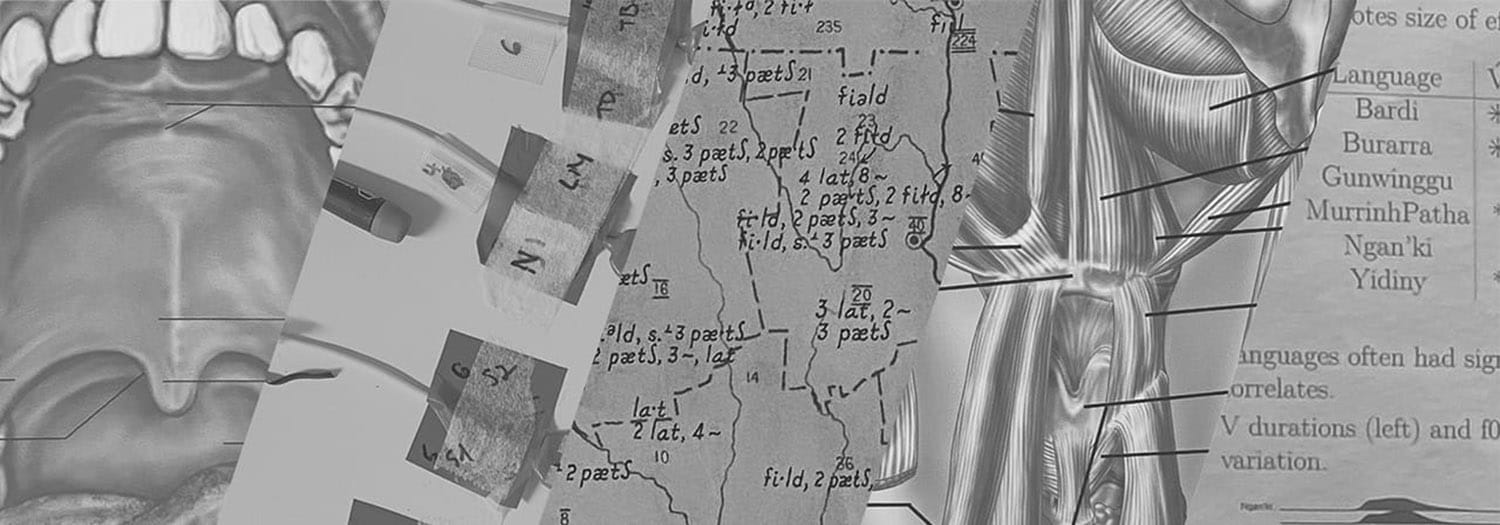Sign language courses at Yale
The Department of Linguistics is pleased to host the very first language courses in American Sign Language (ASL) ever taught in Yale College, starting in the upcoming Spring 2018 semester. The courses will be taught by Jessica Tanner, formerly of the Directed Independent Language Study (DILS) program, who will be joining our department as a language lector. The courses are part of a three-semester pilot program, which currently includes the following offerings.
| Term | Number | Course Name | Level |
|---|---|---|---|
| Spring 2018 | ASL 110 | American Sign Language I | L1 |
| ASL 120 | American Sign Language II | L2 | |
| Fall 2018 | ASL 110 | American Sign Language I | L1 |
| ASL 130 | American Sign Language III | L3 | |
| Spring 2019 | ASL 120 | American Sign Language II | L2 |
| ASL 140 | American Sign Language IV | L4 |
Each of the courses listed above will be worth 1.5 course credits. If there is sustained interest and enrollment in the pilot program, the Department will petition for the ASL program to be renewed as a permanent series of course offerings. Courses taken during the pilot program will satisfy the Yale College foreign language distributional requirement, but students seeking to fulfill the requirement using ASL courses should keep in mind that the availability of courses at the appropriate levels specified by the requirement is dependent upon whether or not the pilot program will be expanded to a permanent program in ASL.
Below are answers to some frequently asked questions about the pilot program.
- Can I receive credit for ASL 110 without taking ASL 120?
Yes. Students who take ASL 110 earn 1.5 credits even if they do not take ASL 120. - Do ASL courses count towards the foreign language distributional requirement?
Yes. However, because this is a three-semester pilot program, we cannot currently guarantee that any ASL courses will be offered after the Spring 2019 term. Since the courses needed to satisfy the foreign language distributional requirement depend on each student’s individual background, some students may be able to satisfy the requirement only with courses offered in the pilot program, while others can only satisfy the requirement if ASL courses continue to be offered after the end of the pilot program. Some examples of common scenarios in which a student may or may not be able to fulfill the foreign language distributional requirement with the pilot program are discussed below. Please consult the academic regulations for more information about the foreign language distributional requirement, including requirements for students not falling into any of the following categories.- Students with no previous experience in foreign language study must reach the L3 level. Beginning ASL students may take ASL 110 in Spring 2018 or Fall 2018 and ASL 120 in Spring 2019. However, because Spring 2019 is the last semester of the pilot program, students in this category may only take the L3-level ASL 130 if it is offered as part of a permanent ASL course series beyond the pilot program.
- Students who place into the L2, L3, or L4 level in ASL must reach the L4 level. This can be done within the pilot program by taking ASL 120 during Spring 2018, ASL 130 during Fall 2018, and/or ASL 140 during Spring 2019.
- Students who have received a 5 on the AP French, German, Italian, Latin, or Spanish examination or a 6 or 7 on the IB Advanced-Level examination may fulfill the foreign language distributional requirement by reaching the L2 level in a different foreign language. Students in this category may fulfill the requirement by taking ASL 110 in Spring 2018 or Fall 2018 and ASL 120 in Spring 2019.
- Are enrollments capped? How will students be chosen?
In the upcoming Spring 2018 semester, enrollment in all ASL classes will be capped at fourteen (14). We anticipate that everyone who wants to take ASL 120 will be able to do so, but that student demand for ASL 110 may exceed the course’s capacity. Students interested in taking ASL 110 in Spring 2018 should send answers to the following questions by email to the instructor at jessica dot tanner at yale dot edu. Please limit your answers to a maximum of one (1) page in length.- Why do you want to take this course?
- Why would you like to take it in Spring 2018?
- Would Fall 2018 be an acceptable option?
- Are there advantages to taking ASL 110 this Spring as opposed to next Fall?
For graduating seniors, the answer is clear: this Spring is the only chance you’ll have! For other students, the answer is not as clear. If you take ASL 110 this Spring, you’ll get to see whether or not you like ASL, and you may seek opportunities outside of Yale to study ASL over the summer. If you take ASL 110 next Fall, you will be able to transition from ASL 110 to ASL 120 during consecutive semesters. - Do ASL courses count towards the Linguistics major?
Like all other language courses, ASL courses do not count towards the major in Linguistics.
The pilot program in ASL was made possible by a number of contributors from various parts of the University. Professor Raffaella Zanuttini, as Director of Undergraduate Studies, composed and submitted a proposal for the ASL courses to the Language Study Committee and the Teaching Resource Advisory Committee on behalf of the Department of Linguistics. A number of groups and individuals outside the Department have also supported the creation of an ASL program, including the Yale College Council’s Disability Resources Task Force, Center for Language Study director Nelleke Van Deusen-Scholl, and the Language Study Committee. George Levesque, Associate Dean of Yale College, was instrumental in the success of this initiative.


